Comparison between 802.11/n and 802.11/ac - Part 1 (Guest Blog)
By Marcelo Ferreira On 09/22/2021
About the Author
Marcelo Ferreira
Wireless Specialist acting in the Wireless Field since 2005 in different projects Indoor and Outdoor for different vendors in the Market in different segments. Wireless Certifications globally recognized:
CCIE Enterprise Wireless #65117
CWNA – Certified Wireless Network Administrator
CWDP – Certified Wireless Design Professional
CWAP – Certified Wireless Analysis Professional
CWISA – Certified Wireless IoT Solutions Administrator
CWSP – Certified Wireless Security Professional
References
− CWAP Study Guide by Tom Carpenter and other Authors
− CWNA Study Guide by David Coleman
− QAM Formats - https://www.electronics-notes.com/articles/radio/modulation/quadrature-amplitude-modulation-types-8qam-16qam-32qam-64qam-128qam-256qam.php
− Modulations - https://mimomax.com/about-us/our-technologies/modulation-rates/
− Cisco Wireless eBook - http://cs.co/wirelessbook
− 802.11ac: A Survival Guide by Matthew S. Gast
− MAC level Throughput comparison: 802.11ac vs. 802.11n - Oran Sharon, Yaron Alpert
Considerations
1- We are considering the WAN is functioning correctly with good latency and performance and will not be considered as part of any comparison on this document.
2- No Tests or other comparison will be done in 2.4Ghz frequency because the 802.11/ac works only in 5Ghz and for 2.4Ghz it continues to use 802.11/n protocol which is already being used by ACME and is not part of the studies we want to demonstrate.
3- As in ACME we use in the Wireless Infrastructure a Channel Width of 20Mhz, for the purpose of the tests we will only perform tests with 5Ghz in 20Mhz channel width.
4- The tests are going to be performed with a Fast Ethernet Switch so the best Speed we will achieve will be about 90Mbps during the tests using iperf3 in the best-case scenarios.
5- The Wireless Controller we are going to use during the tests will be Cisco 9800-CL with image 17.3.4 without APSP patch applied. This image is currently the one used in Production for New WLCs at ACME.
6- The Access Points being used in the tests will be Cisco 1832i which with the following support:
802.11/n version 2.0
− 3x3 MIMO with 2 spatial streams
− Maximal Ratio Combining (MRC)
− 20- and 40-MHz channels
− PHY data rates up to 300 Mbps (40 MHz with 5 GHz)
− Packet aggregation: A-MPDU (Tx/Rx), A-MSDU (Tx/Rx)
− 802.11 Dynamic Frequency Selection (DFS)
− Cyclic Shift Diversity (CSD) support
802.11/ac Wave 1 and 2
− 3x3 MIMO with 2 spatial streams, single-user or multiuser MIMO
− Maximal Ratio Combining (MRC)
− 802.11ac beamforming (transmit beamforming)
− 20-, 40-, and 80-MHz channels
− PHY data rates up to 867 Mbps (80 MHz in 5 GHz)
− Packet aggregation: A-MPDU (Tx/Rx), A-MSDU (Tx/Rx)
− 802.11 Dynamic Frequency Selection (DFS)
− Cyclic Shift Diversity (CSD) support
7- The endpoint devices considered in the tests for this documentation are:
− Windows 10 – VMWare image with USB Wireless Card Model – Edimax AC1750 – 3 Spatial Streams
− MacBook Pro 16" – 3 Spatial Streams
− iPad Pro 11" – 2 Spatial Streams
8- Topology used for the tests:
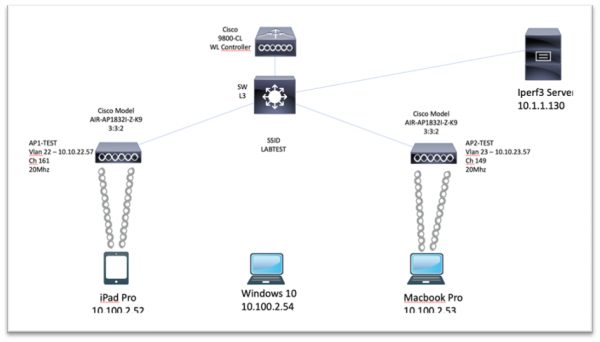
Briefing
We are going to start this document talking about 3 main needs on Enterprise Wireless Infrastructure:
1- Coverage: Good Wireless Design, Good Devices used in the Solution, Right Protocol used (e.g.,11/n – 11/ac, etc.)
2- Capacity: Right number of users distributed per Access Point, Spatial Streams, Types of Devices, Types of Application usage
3- Roaming: Right roaming protocol in the WLCs (FT, OKC, 11v, 11k, etc.), right wireless drivers running on endpoints (Tested Standard Drivers)
Before starting with the tests, we need to give you some technical background about the two technologies involved in 11/n and 11/ac:
- The 802.11 Protocol for 11/n
- The 802.11 Protocol for 11/ac
The 802.11 Protocol for 802.11/n
− Introduced in 2009
− Uses HT PHY – High Throughput
− Transmit Beamforming (TxBF)
− Space Time Block Code (STBC)
− Uses 20Mhz and 40Mhz divided in primary channel and secondary channel
− Operates in 2.4Ghz and 5Ghz Bands
− Introduced the Technology MIMO – Multiple Input Multiple Output – Transmits Multiple Streams of Data to the Receiver.
− Supports up to 4 Spatial Streams
− Modulation Rates – up to 64 QAM with 6 bits per Symbol – Explained later in more details
− Data Rates up to 600Mbps depending on number of Spatial Streams used by Endpoint device. – Explained later in more details
Modulation Rates
Modulation Rates means the number of the bits per symbol for transmitting data. The more bits that can be represented by a symbol the more data can be transferred across the network. Higher modulation means more data transmitted and better usage of Spectrum. 802.11/n can reach up to 64QAM Modulation. Giving some examples below:
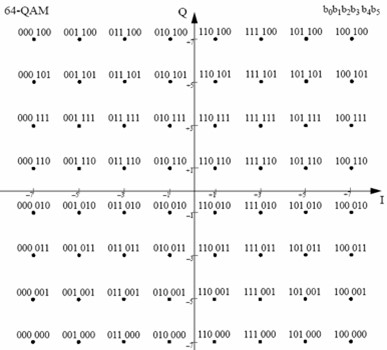
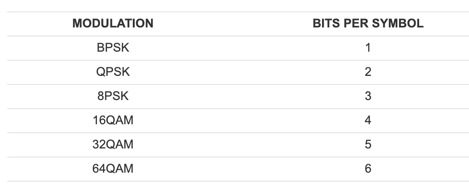
Data Rates
Modelez Laptops are in most cases (I didn't see any with 3 Spatial Stream yet) 2 Spatial Stream capable devices. In 5GHz band using Short Guard Interval or SGI (Explained later) can reach Data Rates of 144.4 Mbps in 20Mhz Channels and without SGI reaches up to 130Mbps.

The 802.11 Protocol for 802.11/ac
− Introduced in 2013
− Uses VHT PHY – Very High Throughput
− Explicit Beamforming (advanced signal-processing technique used in multiple-antenna communications)
− Uses 20Mhz, 40Mhz , 80Mhz and 160Mhz
− Operates in 5Ghz Band only. For 2.4Ghz the protocol used is still the 802.11/n.
− MIMO and MU-MIMO – Takes advantage of Beamforming increasing capacity and performance and uses Spatial Reuse where the same channel can be used in different areas by the same access point.
− Supports up to 8 Spatial Streams. In Practical Scenarios only 4 Spatial Streams Access Points are commercialized. 8 SS is more used in 802.11/ax which is not going to be discussed in this document.
− Modulation Rates – up to 256 QAM with 8 bits per Symbol – Explained later in more details
− Data Rates up to 6933.3 Mbps with 8 Spatial Streams but in practical Scenario we can consider 4 Spatial Streams and up to 3466.7 Mbps at 160Mhz – Explained later in more details
Modulation Rates
Modulation Rates means the number of the bits per symbol for transmitting data. The more bits that can be represented by a symbol the more data can be transferred across the network. Higher modulation means more data transmitted and better usage of Spectrum. 802.11/ac can reach up to 256QAM Modulation which represents ~33,33% more bits per symbol for data transmission:
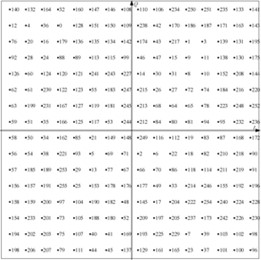
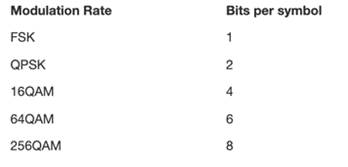
Data Rates
Modelez Laptops are in most cases 2 Spatial Stream capable devices. In 5GHz band using Short Guard Interval or SGI (Explained later) can reach Data Rates of 173.3 Mbps in 20Mhz Channel and without SGI reaches up to 156 Mbps, which increased the gain in the data rates in 20% in 20Mhz channel
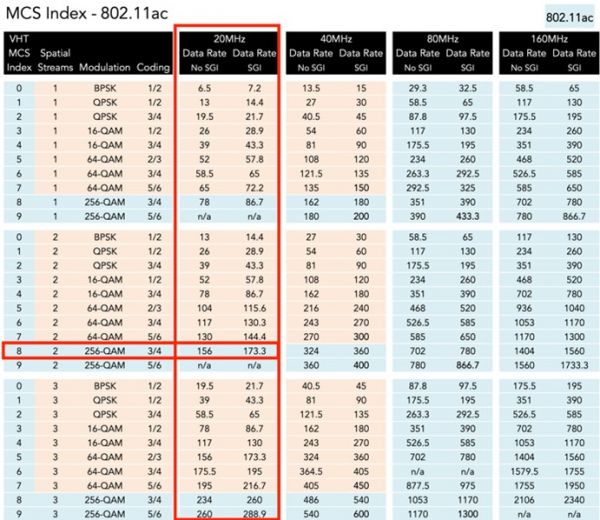
Stay tuned. For part 2, click here.
Tagged with: 802.11ac, 802.11n, comparison, modulation rates, data rates, protocol
Blog Disclaimer: The opinions expressed within these blog posts are solely the author’s and do not reflect the opinions and beliefs of the Certitrek, CWNP or its affiliates.



